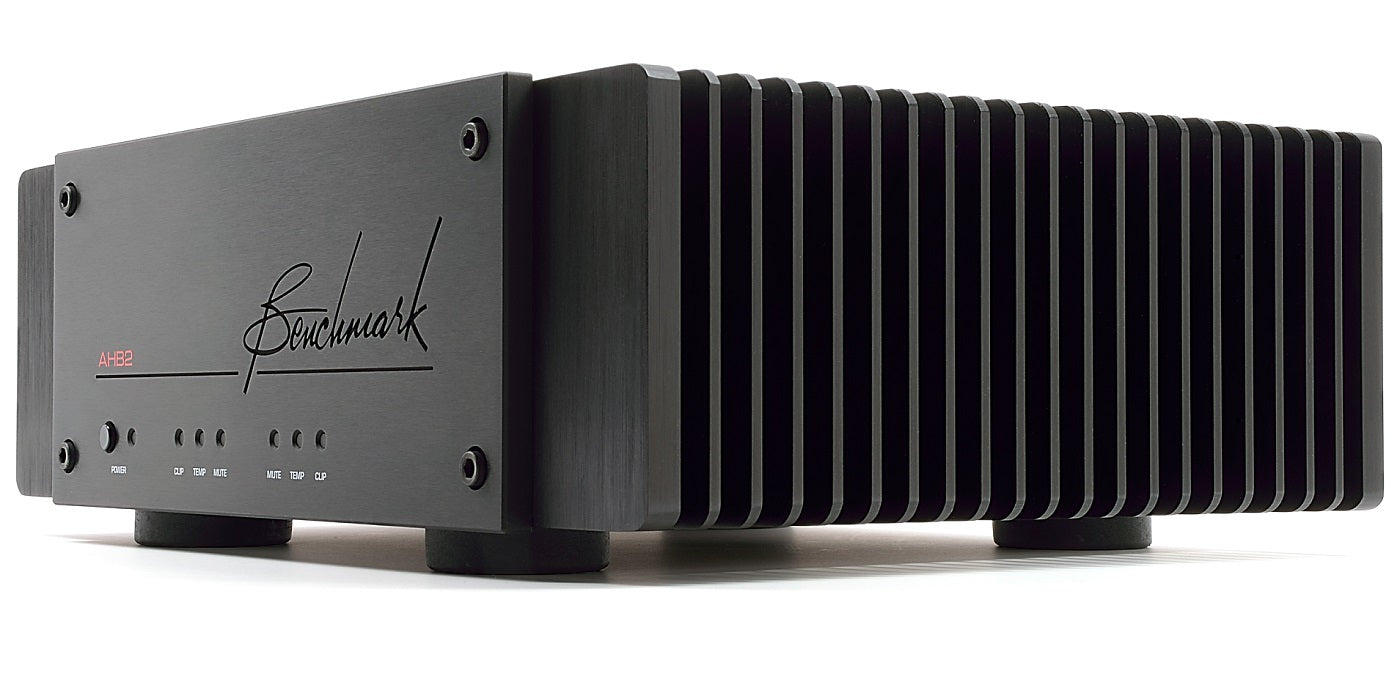Buy 2 components and get 4 free cables. Free shipping on all orders over $700.
Making Sound with Plasma - Hill Plasmatronics Tweeter
by John Siau June 06, 2023

At the 2023 AXPONA show in Chicago, I had the opportunity to see and hear the Hill Plasmatronics tweeter. I also had the great pleasure of meeting Dr. Alan Hill, the physicist who invented this unique device.

Dr. Alan Hill (center), his son (left), John Siau (right), and Rory Rall (rear)
The plasma driver has no moving parts and no diaphragm. Sound is emitted directly from the thermal expansion and contraction of an electrically sustained plasma. The plasma is generated within a stream of helium gas. In the demonstration, there was a large helium tank on the floor with a sufficient supply for several hours of listening.
I had read about Dr. Alan's plasma tweeter and was thrilled to hear that he would be demonstrating it in public for the first time in forty years. With great excitement, Rory Rall and I headed to the Plasmatronics room at AXPONA 2023. As we approached the room, a faint smell of smoke filled the hallway. This intensified as we entered the room. We could now see what appeared to be two flames burning inside of protective cages at the front of the room. A few moments later we experienced the amazing sound produced by the strange collection of equipment.

This wonderful sound was interrupted when one of the presenters walked to the front of the room and blew out the plasma just as if it were a burning candle. Instantly, the frequencies above 1 kHz were gone and at that moment we realized just how much sound was coming from what looked like a burning candle inside of a bird cage. After adjusting the flow of helium and pressing an igniter button, the sound was restored!
While a tank of helium, tubing, high voltage power supplies, and the smell of smoke may not be appropriate for every living room, this was absolutely the best thing I experienced at the show.
Special thanks to Dr. Hill and the others who made this unique demonstration possible!
- John Siau
Also in Audio Application Notes

Audiophile Snake Oil
by John Siau April 05, 2024
The Audiophile Wild West
Audiophiles live in the wild west. $495 will buy an "audiophile fuse" to replace the $1 generic fuse that came in your audio amplifier. $10,000 will buy a set of "audiophile speaker cables" to replace the $20 wires you purchased at the local hardware store. We are told that these $10,000 cables can be improved if we add a set of $300 "cable elevators" to dampen vibrations. You didn't even know that you needed elevators! And let's not forget to budget at least $200 for each of the "isolation platforms" we will need under our electronic components. Furthermore, it seems that any so-called "audiophile power cord" that costs less than $100, does not belong in a high-end system. And, if cost is no object, there are premium versions of each that can be purchased by the most discerning customers. A top-of-the line power cord could run $5000. One magazine claims that "the majority of listeners were able to hear the difference between a $5 power cable and a $5,000 power cord". Can you hear the difference? If not, are you really an audiophile?

Audio Calculators
by John Siau June 04, 2023
We have added an "Audio Calculators" section to our webpage. Click "Calculators" on the top menu to see more like these:

System Performance Calculations
by John Siau June 03, 2023
If an audio system is composed of multiple components, we may have detailed specifications for each component, but we will not know the performance of the combined system without doing some calculations. You may have questions such as these:
- Will my audio system produce audible noise?
- Will my audio system produce audible distortion?
- How will my audio components work together as a system?
- How loud will my audio system play?
Use Benchmark's online audio calculators to find answers!
For example, if we know the output power of an amplifier, as well as the sensitivity and impedance of our loudspeakers, we can calculate the maximum sound pressure level that our system can produce.
This application note provides interactive examples that help to answer the questions listed above.

